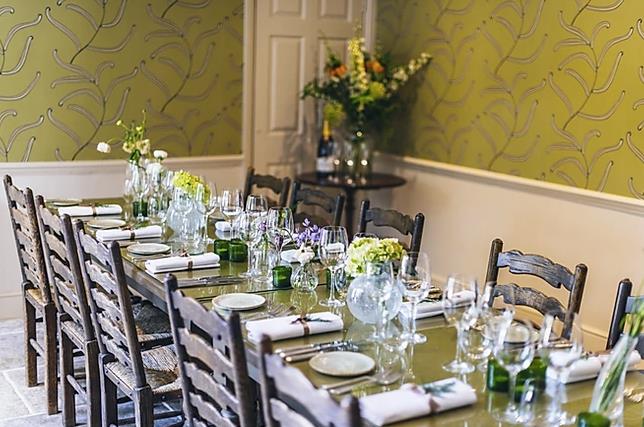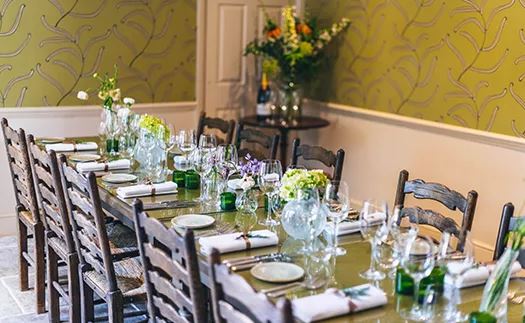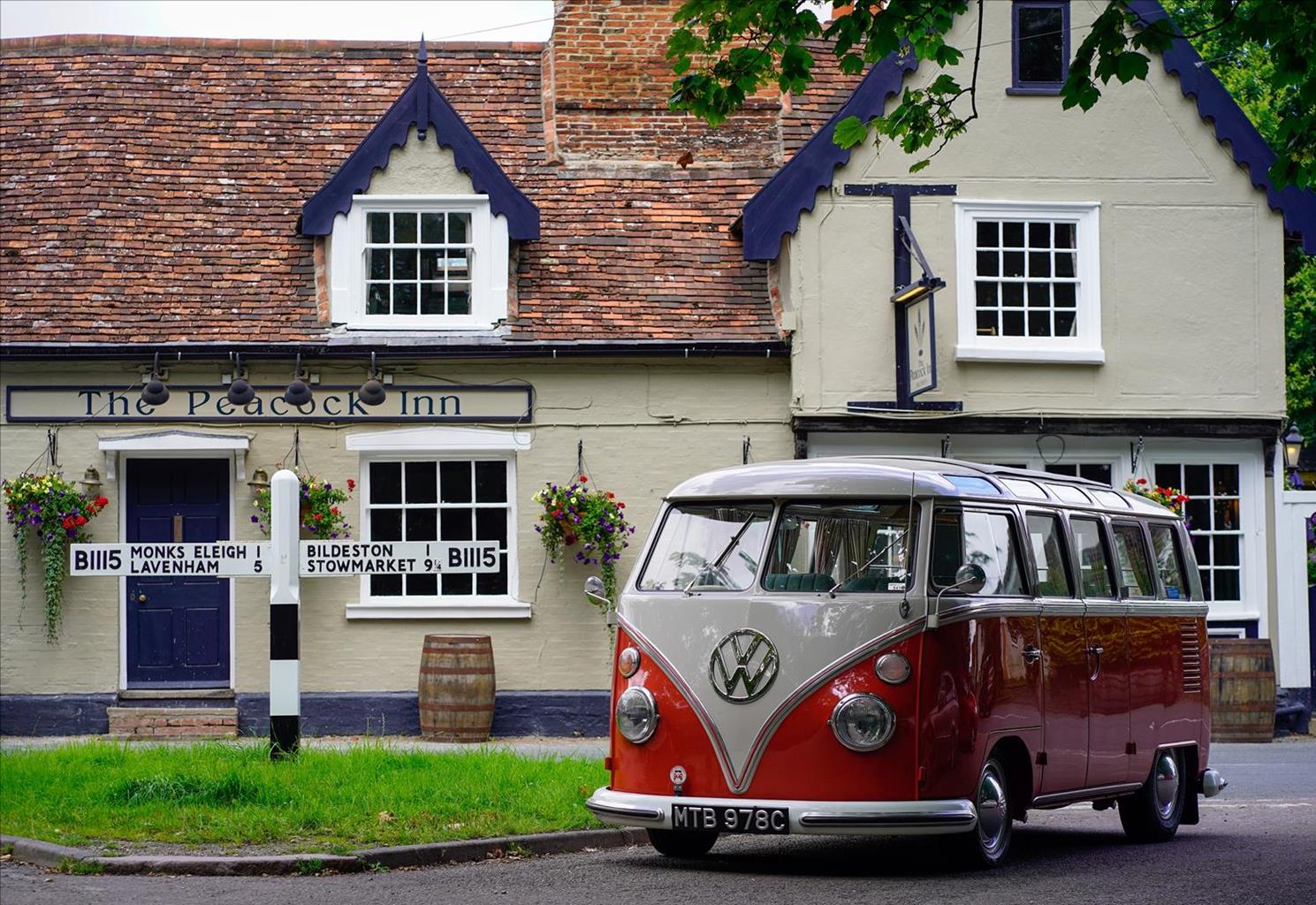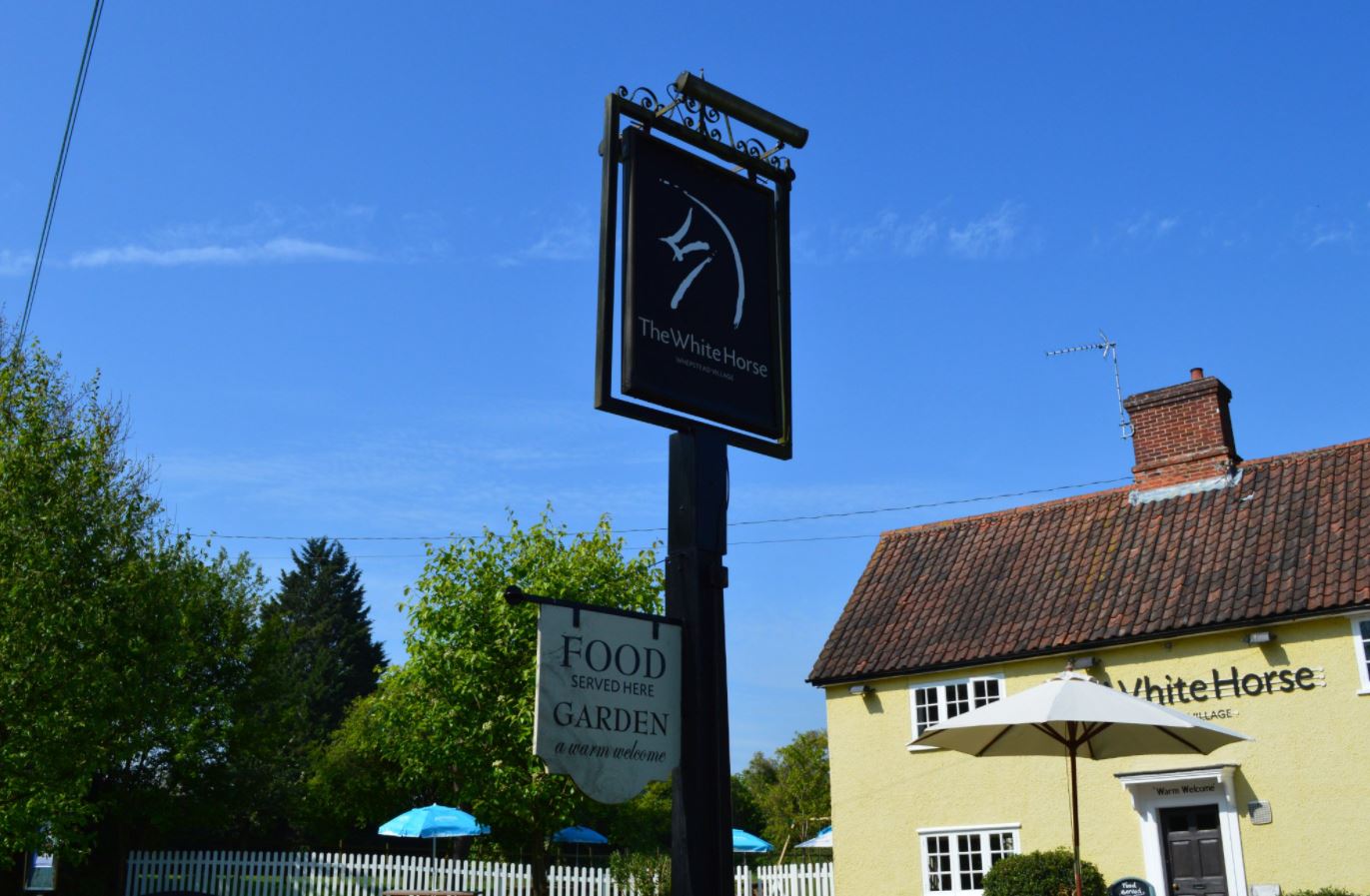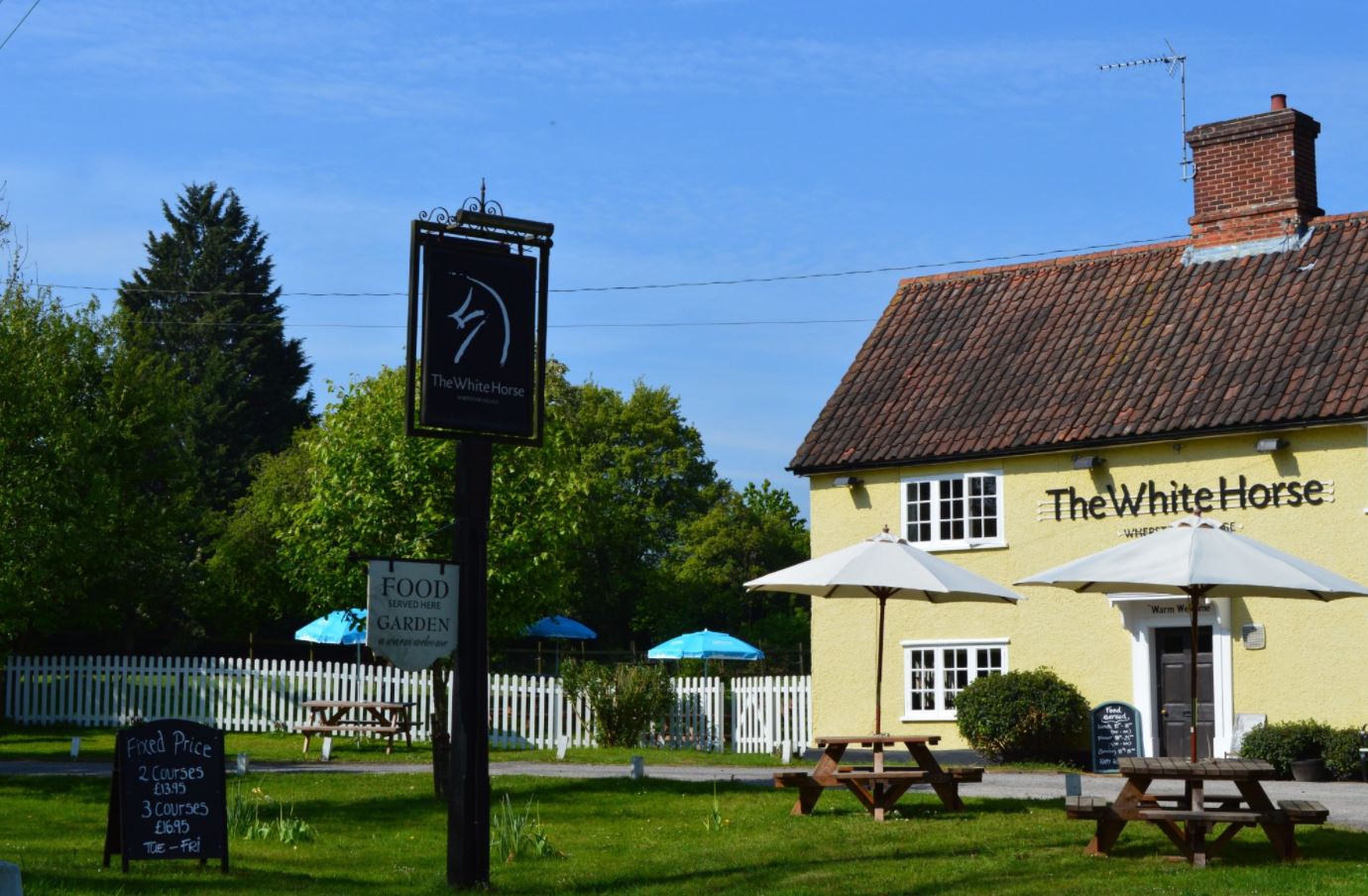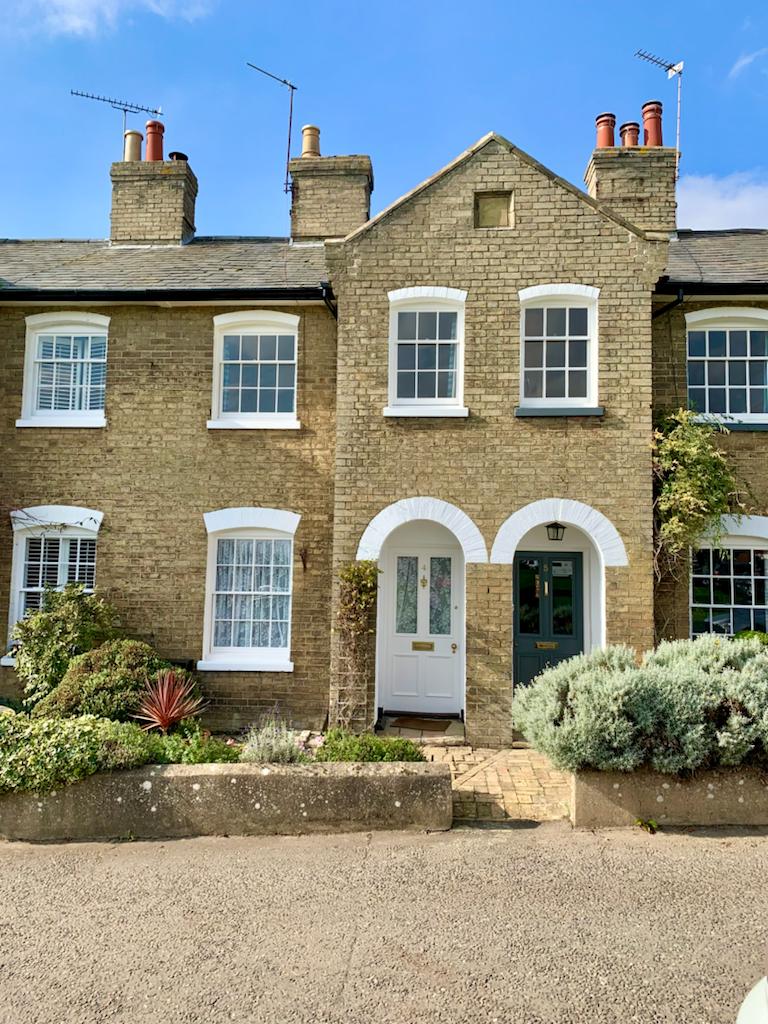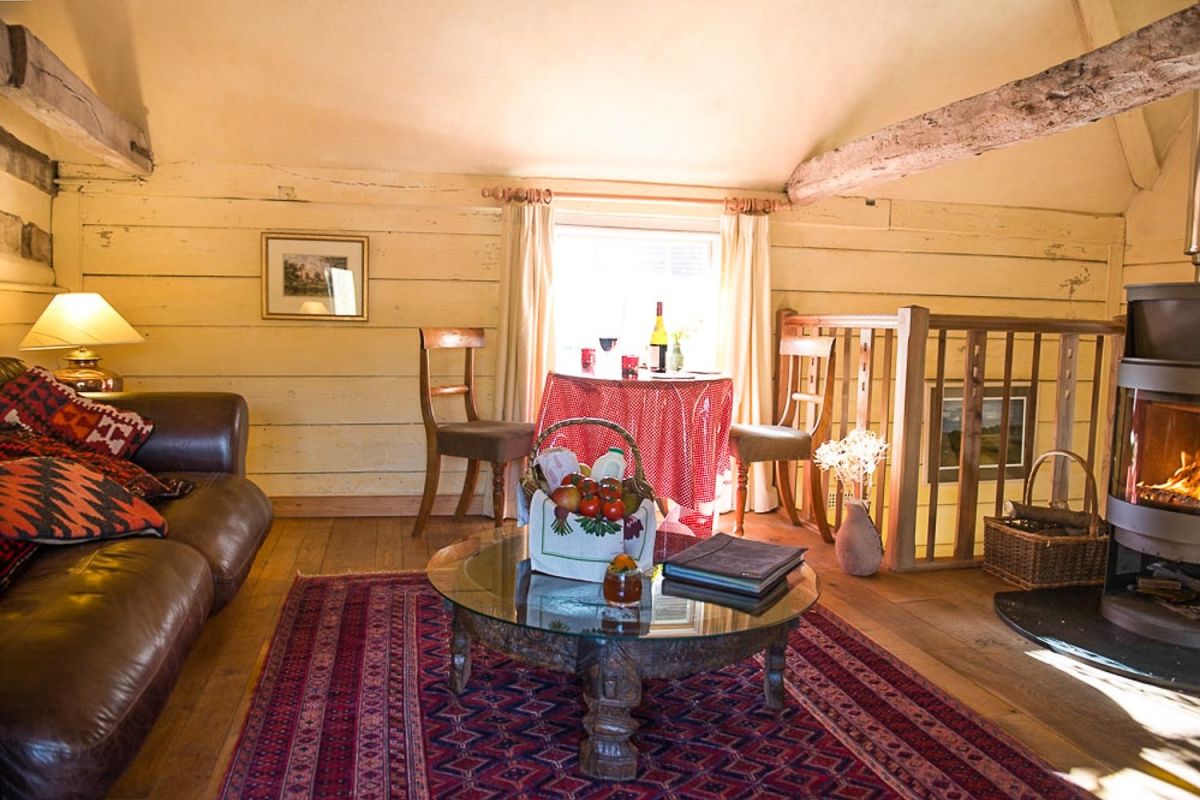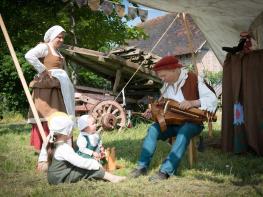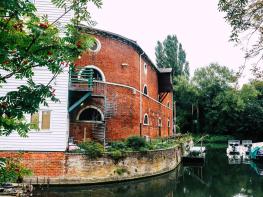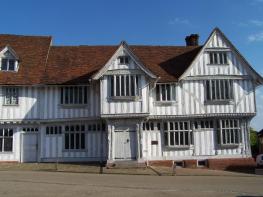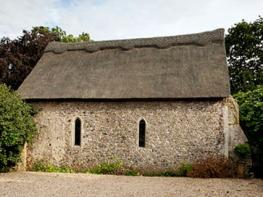The Black Lion is a very inviting establishment. It has roaring log fires in winter, a cosy…
The Tudors of Long Melford

A walk through farmland and woodland by a Tudor mansion and a fine church.
6 miles (9.7kms)
About the walk
During the 15th century while much of England was in economic decline, the wool towns of South Suffolk prospered on the lucrative trade in wool, cloth and silk. Among the legacies of this period are the so-called 'wool churches', financed by rich merchants and built in the Perpendicular style. Some of these churches are cathedral-like in their stature. There are fine wool churches at Lavenham, Sudbury, Cavendish and Clare, but perhaps the greatest of all is Holy Trinity Church, Long Melford.
Wool church
The church stands alone at the top of the green, utterly dominating its surroundings. This is the only parish church in England to have its own separate Lady Chapel, a feature normally reserved for cathedrals and abbeys (look at the multiplication tables painted on to the wall, that show that the Lady Chapel was also once the village school). The north aisle of the church contains some of the finest 15th-century stained glass in England. Look for the 'rabbit window' above the north door, featuring three rabbits sharing three ears, thought to be a reference to the Holy Trinity.
Sir William Cordell
Long Melford means 'long mill ford' and the village boasts the longest main street in England, running south from the green for almost 2 miles (3.2km). Two names crop up repeatedly in the history of the village. Sir William Cordell was a Speaker of the House of Commons who was granted the manor of Melford after the Dissolution of the Monasteries - it had previously been a hunting estate for the monks of Bury St Edmunds Abbey. He built Melford Hall, where he entertained Queen Elizabeth I in 1578, and he was also responsible for the founding of Trinity Hospital for '12 poor men' in 1573. His richly carved tomb can be seen in the chancel of the church.
The other great Melford family were the Cloptons of Kentwell Hall. It was John Clopton, a clothier, who helped to fund the church and it is full of monuments to his family, including a recumbent statue of Sir William Clopton, 'whose door was ever open to the poor.' The Cloptons had their own entrance to the church and their own chantry chapel, even their own separate font for holy water, cleverly set into Sir William Clopton's tomb. Kentwell Hall has now been revived as a living history museum. Don't be surprised to see monks, merchants and maidens in Elizabethan costume as you glance over the wall during one of the regular re-enactments of Tudor life.
Walk directions
Starting from the Black Lion Hotel, walk up the west side of the green towards the church, passing the almshouses of Trinity Hospital on the way. Bear left around the church and walk through the rectory garden. Cross a stile, then turn right in a few paces and cross a paddock, heading for the interestingly designed sliding gate in the corner. Cross a stile to reach a meadow and continue straight ahead until you reach the long drive to Kentwell Hall.
Turn left at the stile and walk beside the avenue of lime trees towards Kentwell Hall. When you reach the main gate, turn left to walk through the grounds with good views of the hall. Follow the waymarks to turn right beside a hedge and continue straight ahead on a wide track that crosses farmland with sweeping views to both sides. Ignore tracks leading off to right and left and continue towards Kiln Farm.
Just before the derelict farm buildings, turn right on to a track running between the fields and the woods. At the second wood, Ashen Grove, turn left on to a shady woodland path that crosses two grassy tracks and swings right through the trees to emerge on to a field-edge path. Continue straight ahead on a cross-field path that cuts through a hedge and makes its way across the fields towards Bridge Street. Cross a lane and walk past a recreation ground, then go over a pair of stiles, with a sharp right in between, to reach the A134 by the Rose and Crown pub.
Cross the main road carefully and take the left fork opposite. Almost immediately, turn right on to a path alongside Chad Brook. Stay on this path for about 1.75 miles (2.8km) as it crosses a footbridge to the west side of the brook, then clings to the stream between farmland to the right and woodland to the left. Ignore the first path off to the right. At the end of the woods, the path suddenly swings right to climb around the edge of a field and return to the A134.
Cross the road again and keep straight ahead along Hare Drift, now a concrete track. You reach Long Melford between a garden centre and a pub, directly opposite the entrance to Kentwell Hall. Cross the road, turn left and walk back down towards the green.
Additional information
Farm tracks, field and woodland paths, 5 stiles
Farmland, woodland and views of Holy Trinity Church
On lead across farmland
OS Explorer 196 Sudbury, Hadleigh & Dedham Vale
Church Walk, Long Melford
In churchyard near they village green and at entrance to Kentwell Hall
WALKING IN SAFETY
Read our tips to look after yourself and the environment when following this walk.
Find out more
Also in the area
About the area
Discover Suffolk
Suffolk is Constable country, where the county’s crumbling, time-ravaged coastline spreads itself under wide skies to convey a wonderful sense of remoteness and solitude. Highly evocative and atmospheric, this is where rivers wind lazily to the sea and notorious 18th-century smugglers hid from the excise men. John Constable immortalised these expansive flatlands in his paintings in the 18th century, and his artwork raises the region’s profile to this day.
Walking is one of Suffolk’s most popular recreational activities. It may be flat but the county has much to discover on foot – not least the isolated Heritage Coast, which can be accessed via the Suffolk Coast Path. Southwold, with its distinctive, white-walled lighthouse standing sentinel above the town and its colourful beach huts and attractive pier features on many a promotional brochure. Much of Suffolk’s coastal heathland is protected as a designated Area of Outstanding Natural Beauty and shelters several rare creatures including the adder, the heath butterfly and the nightjar. In addition to walking, there is a good choice of cycling routes but for something less demanding, visit some of Suffolk’s charming old towns, with streets of handsome, period buildings and picturesque, timber-framed houses.
Nearby stays
Restaurants and Pubs
Nearby experiences
Recommended things to do
Why choose Rated Trips?
Your trusted guide to rated places across the UK
The best coverage
Discover more than 15,000 professionally rated places to stay, eat and visit from across the UK and Ireland.
Quality assured
Choose a place to stay safe in the knowledge that it has been expertly assessed by trained assessors.
Plan your next trip
Search by location or the type of place you're visiting to find your next ideal holiday experience.
Travel inspiration
Read our articles, city guides and recommended things to do for inspiration. We're here to help you explore the UK.


